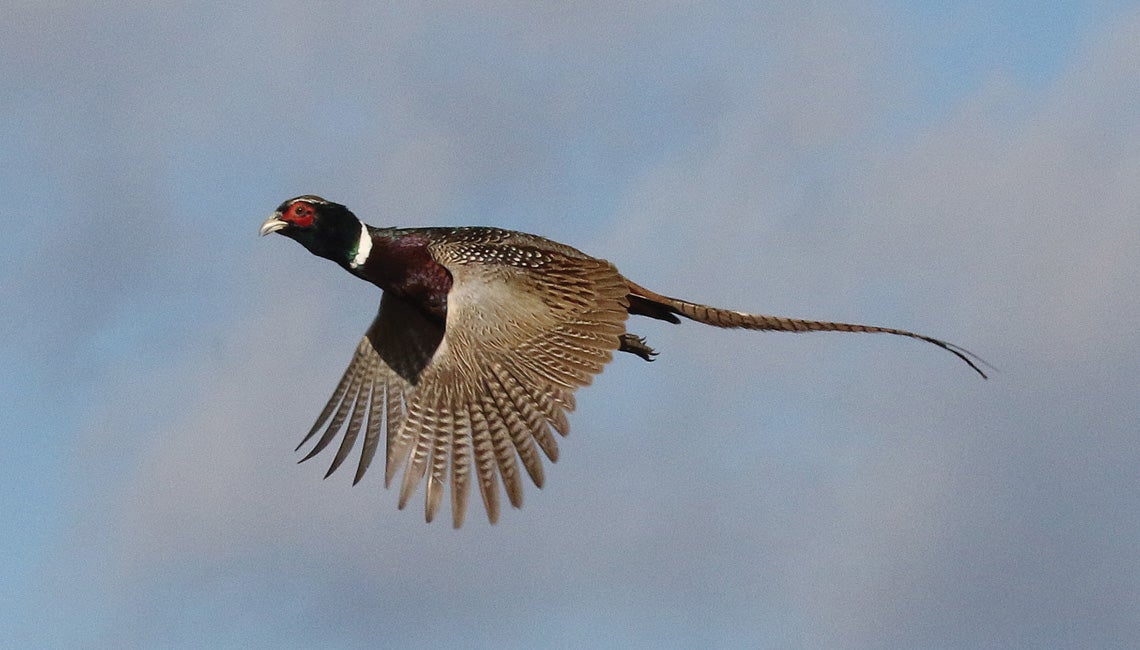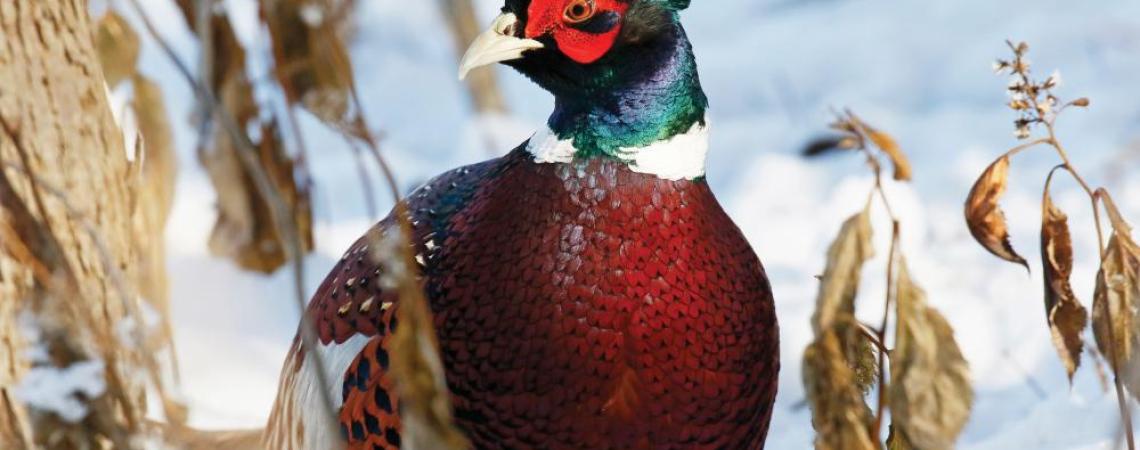I’m old enough to have witnessed the demise of much of the ring-necked pheasant population in Ohio firsthand. In the 1960s, I remember my father taking me on a pheasant hunt to private property in the northwest part of the state. We had a great time, and we returned on opening day the next year anticipating the same.
What we didn’t anticipate were the bulldozed fence rows, burned brush piles, and other forms of habitat destruction we found when we got there. Needless to say, we didn’t see many pheasants that November day and we never returned to that farm.
Asian ring-necked pheasants are also known as “ditch parrots” because of their bright plumage as well as their tendency to lounge along roadsides.
Ringneck numbers in Ohio peaked during the 1930s and ’40s, and have been on a steady downhill slide ever since. The reason for the decline is simple, as it is throughout the North American pheasant range: the disappearance of quality grassland habitat.
As goes the habitat, so goes the population of birds.
The Asian ring-necked pheasant is a non-native game bird to Ohio; the first stocking here occurred in 1896. The first law regulating the bird’s hunting soon followed, with no hunting permitted until Nov. 10, 1900. By that time, ringnecks had become well established throughout most of the state, with the population peaking at an astounding 5 million wild pheasants!
The birds (also known as “ditch parrots” because of their bright plumage as well as their tendency to lounge along roadsides) found the Ohio landscape, with its patchwork of small farm fields and rural areas, welcoming and homey during the early 20th century. Farming was still largely done with horses, so pastures and hayfields were needed to feed those horses, as well as milk cows. Brushy fencerows provided both cover from predators and travel lanes to and from the crop fields where the pheasants found an ample food supply. In essence, it was ringneck paradise.
“The booming pheasant population began drawing hunters from across the Midwest,” says Jim Abrams, a retired Ohio wildlife officer and a member of Hancock-Wood Electric Cooperative. “Hotels were filled and cash was changing hands in diners, bars, hardware stores, and gas stations. Small towns in northwest Ohio — Van Buren, Liberty Center, Arlington, Kalida, and others — became destinations not only for out-of-town hunters but for out-of-state hunters as well. The economic value of the high pheasant population was palpable.”
Hunting was for cock birds only (hens were protected by law) and some 750,000 were taken annually in the Buckeye State. Of course, sportsmen were known to make occasional mistakes identifying the sexes, as Abrams recounts:
“Many game wardens began suspecting that more than the legal daily limit of pheasants were being taken, so officers began conducting roadblock inspections of vehicles. Cursory inspection of game bags was the norm, but if an officer brought along his bird dog, things could get interesting.
“For example, in one instance an officer turned his dog loose around one of the stopped cars, and the hunters began getting a little nervous. The dog went on point on one of the vehicle’s wheels, and the officers soon discovered that the hunters had hidden a dead, illegal hen pheasant behind the hubcap.”
Chances are we will never again see wild ringnecks in numbers anywhere close to what they once were in the Buckeye State. Again, habitat is key, and the undisturbed grasslands required for pheasant nesting and survival are few and far between in modern-day Ohio.
Organizations are attempting to stem that downward trend. Along with the Ohio Division of Wildlife, private conservation and hunting groups such as Pheasants Forever are working on habitat restoration programs.
That said, if you are a landowner who would like to manage your property for ringnecks and other wild grassland birds — both game and nongame — either of those agencies would be a great place to start. Cost-sharing is available if your property qualifies.
W.H. “Chip” Gross is Ohio Cooperative Living’s outdoors editor. Email him with your outdoors questions at whchipgross@gmail.com. Be sure to include “Ask Chip” in the subject of the email. Your question may be answered on www.ohiocoopliving.com!










